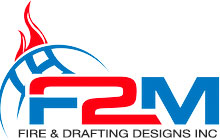Commercial Buildings
Fire Sprinkler Systems: A Crucial Element of Building Safety
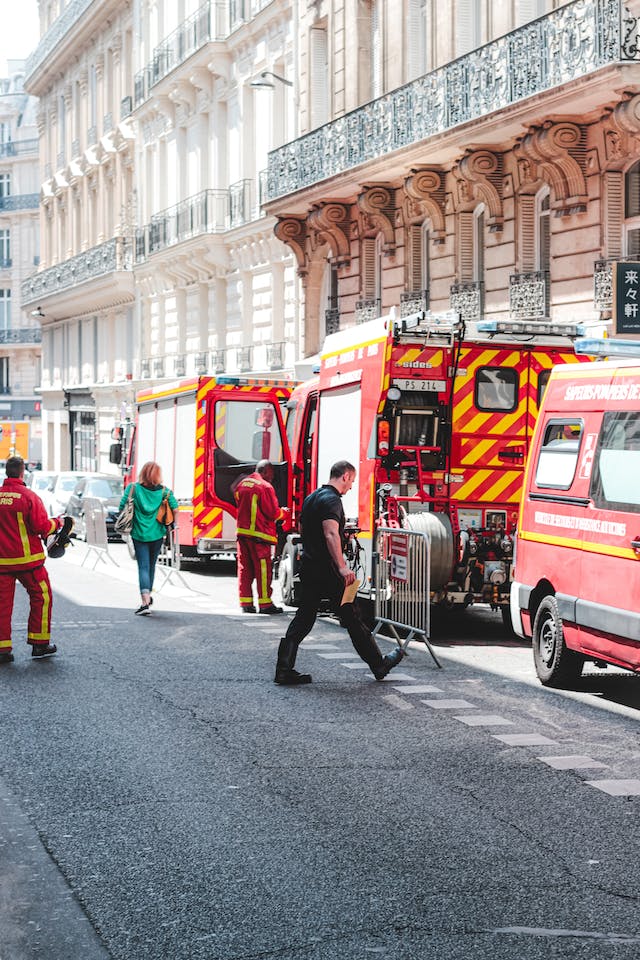 In the realm of building safety, few elements are as crucial as well-designed fire sprinkler systems. These systems stand as silent guardians, ready to respond when the unthinkable happens – a fire outbreak. In this blog post, we explore the significance of fire sprinkler systems and their integral role in safeguarding lives and property.
In the realm of building safety, few elements are as crucial as well-designed fire sprinkler systems. These systems stand as silent guardians, ready to respond when the unthinkable happens – a fire outbreak. In this blog post, we explore the significance of fire sprinkler systems and their integral role in safeguarding lives and property.
The Fire Threat
Fires are unpredictable and can escalate rapidly. Without effective fire suppression measures, the consequences can be devastating. Fire sprinkler systems are engineered to address this threat efficiently and swiftly.
How Fire Sprinkler Systems Work
Fire sprinkler systems operate on a simple yet effective principle: when a fire is detected, a sprinkler head in the vicinity activates, releasing water to control or extinguish the flames. This immediate response is vital, as it limits the fire’s growth and buys precious time for evacuation.
Comprehensive Fire Protection
One of the key advantages of fire sprinkler systems is their ability to provide comprehensive protection. These systems can be tailored to various settings, including residential, commercial, and industrial spaces. They adapt to the unique requirements of each environment, ensuring optimal safety.
Complying with Regulations
Building codes and regulations mandate the installation of fire sprinkler systems in many structures. Compliance with these standards is not only a legal requirement but also a responsible choice. Failing to meet these requirements can have severe consequences in terms of safety and potential legal liabilities.
Preventing Property Damage
Beyond saving lives, fire sprinkler systems play a crucial role in preventing extensive property damage. Swift suppression of fires reduces the destruction caused by flames, smoke, and heat, minimizing repair and reconstruction costs.
The Importance of Maintenance
To ensure the reliability of fire sprinkler systems, regular maintenance is essential. Routine inspections, testing, and upkeep activities are vital in keeping these systems in optimal working condition.
Building Safety: Choose F2M Fire & Drafting Designs Inc. for Your Fire Sprinkler System Design
At F2M Fire & Drafting Designs Inc., we understand the paramount importance of fire sprinkler systems in building safety. Our expertise lies in designing and implementing these systems to perfection, tailored to your specific needs.
F2M Fire & Drafting Designs Inc.
31 South Street, Suite 3S-4
Mount Vernon, NY 10550
✆ (718) 928-3009
Let us be your partner in ensuring the safety of your building and the well-being of its occupants.
All About Commercial Fire Protection
What is commercial fire protection and why is it necessary? All companies can face the possible risk of a fire erupting in their workplace, which is why investing in the right fire protection solutions can save lives and your property. However, you want more than any fire protection solution for your home. You want something made specifically for your property. In 2021, fires were responsible for $44 billion in damages to commercial properties.
By understanding the serious risk of not properly protecting your business, you can choose the right fire protection solution. And by learning a lot more about a commercial fire sprinkler system, you can learn how to keep your property safe.

How a Commercial Fire Sprinkler System Works
You can get different fire sprinkler systems for your business, with different ones offering unique features. However, all fire sprinklers work the same way, as they try to eliminate fire in a workplace.
Detecting the Fire
The first important task of any fire protection system is to detect fire anywhere in the workplace. Depending on the system that you install, there can be several sensors in the system that allow it to detect if there is a fire.
One of the most common types of “sensors” these systems have is the solid metal cover on the head of the sprinkler. This cover will melt at about 135°F, which will start to release the water behind the valve. According to a report, these fires can be especially prominent in restaurants.
Most modern fire protection systems will usually connect to the fire alarm inside the workplace, monitoring the workplace’s temperature. A sharp temperature rise is usually enough to trigger the sprinkler system.
Suppressing the Fire
As soon as the system can detect a fire, the next step is to suppress or extinguish the fire. Once the sensors detect a fire, they will open valves to the sprinkler system when the sprinklers spray out water or any other fire suppressant.
While most workplaces will use water as a fire suppressant, it is also possible that companies dealing with sensitive chemicals will have unique chemicals to stop a fire. Furthermore, the number of sprinklers you have in your workplace will generally come down to the size of the office, which is why commercial fire protection services are often unique to specific businesses.
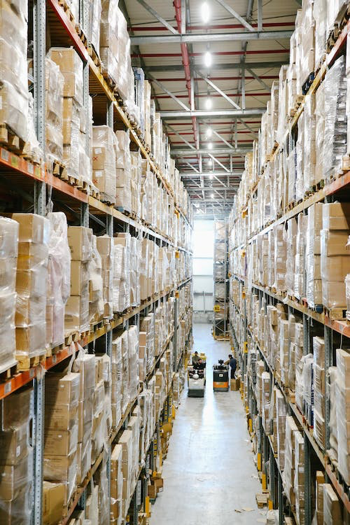
The Many Types of Fire Sprinkler Systems
Businesses will usually put up different fire sprinkler systems depending on the product or services they offer. The different types include:
Deluge Systems
These systems can be especially popular in businesses with flammable or toxic materials. Since the fire is likely to spread incredibly fast, a deluge system will open the valves to all the sprinkler heads to prevent the fire from spreading.
Dry Pipe System
In cities with a much colder climate, water can be a very ineffective way to blast the fire. Therefore, some companies will have a dry pipe system, which throws out certain gas from the sprinkler heads. This gas helps suppress or put out the fire.
Wet Pipe System
This system is the most common one and is especially one that most people are familiar with. This fire protection system will throw out water through a series of pipes to control the fire.
Commercial Fire Protection: Conclusion
Now that you better understand how commercial fire protection services work, you can see why it is essential to your business.
If you’re looking for a firm to design a commercial fire protection system your your property or business, allow our experts at F2M to help. With over 20 years of experience in the field, we offer code compliant and accurate sprinkler designs.
F2M Fire & Drafting Designs Inc.
31 South Street, Suite 3S-4
Mount Vernon, NY 10550
(718) 928-3009
info@f2mfadds.com
https://www.f2mfadds.com/contact
Commercial Building Project: Fire Suppression System
What do you need to know to design and install a commercial fire suppression system? As a business owner or manager, it’s your responsibility to keep your employees and office safe. One of the best ways to ensure workplace safety involves fire protection systems. They’re important in certain cases based on the National Fire Protection Association’s standards in the US. Furthermore, it’s best if you don’t confuse the term “fire suppression system” with “fire sprinkler system.”
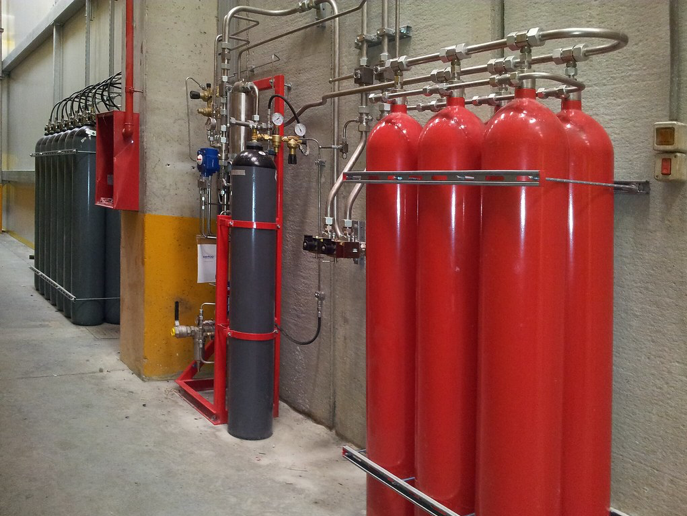
(Source)
Both fire suppression and fire sprinkler systems are different branches of one tree and achieve the same final goal. Fire suppression systems are different from fire sprinkler systems. To help you better understand the difference between the two, we will take a comprehensive look at what commercial building fire suppression systems refer to and how they’re important.
What’s a Fire Suppression System?
Similar to a fire sprinkler system, a fire suppression system is a safety tool in the event of a fire inside a commercial or residential building. It’s a collective term (i.e., fire suppression) for various methods utilized in suppressing and controlling the fire in any given space. For instance, a popular DIY fire suppression approach to prevent or control the spread of fire involves throwing buckets filled with water at the fire source.
Other forms of fire suppression systems include the use of water, chemical compounds, foam, and so on. You will find a range of fire suppression strategies for commercial buildings that apply to your office or real estate structure. However, the goal is the same, i.e., to offer peace of mind to tenants and occupants of a commercial building.
How Does a Fire Suppression System Work?
The main characteristic of a fire suppression system primarily manufactured for use in commercial buildings will be early fire detection. A system like that will detect fire ASAP, and in the presence of smoke/flames, it will instantly ring the alarm. The alarm will be a call to occupants and tenants to take cover or get safety.
The alarm will initiate the appropriate fire suppression strategy, such as releasing chemical compounds, water, or foam to prevent the fire from spreading. You will usually hear qualified professionals referring to a fire suppression system as an “active” fire protection method due to its early detection capabilities and active components.
Fire Suppression System vs. Fire Sprinkler System: What to Know?
Both types of fire protections are vital for a commercial structure, especially with occupants, tenants, or expensive assets. However, the working mechanism of a fire suppression system is relatively different from a commercial fire sprinkler system. Both systems feature early detection and active countermeasures to keep the fire from spreading.
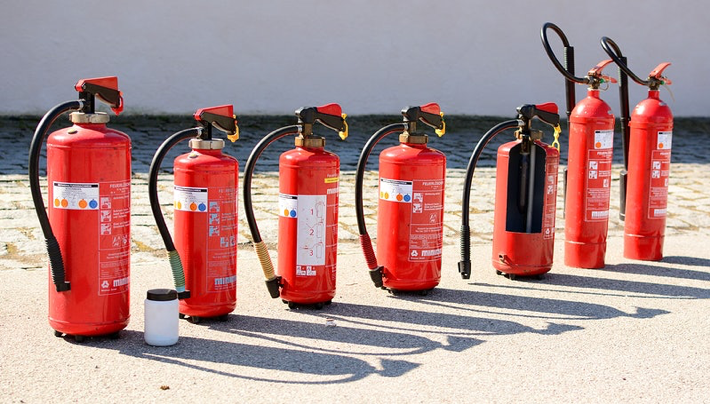
(Source)
In the case of active fire suppression systems, using water isn’t the only method to prevent fire spread and contain it. Unlike a fire sprinkler system, a fire suppression system inside a commercial building usually includes different foaming agents and chemical compounds.
Commercial Fire Suppression System: Conclusion
If you want to get a fire suppression system designed and installed for your commercial building, you can contact F2M Fire Drafting Designs Inc. We can work with your commercial real estate developer, study the whole architecture, and come up with a fire suppression system that would work best for it.
At F2M Fire & Drafting Designs Inc, the qualified professionals have worked with a diverse range of clients in New York. We can take care of your fire protection needs and suppression system design or installation. Don’t hesitate and give us a call at (718) 928-3009 to schedule an appointment with our experts.
Fire Sprinkler Requirements for Commercial Buildings in New York
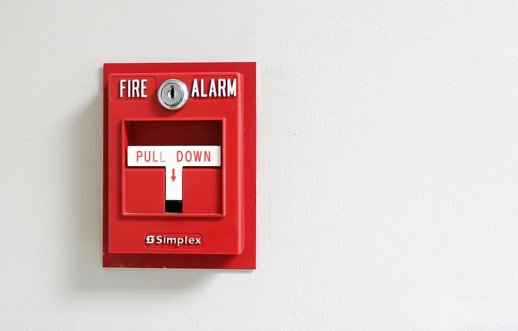
City rules and codes that state fire sprinkler requirements for commercial buildings must be strictly followed. Commercial buildings possess a wide range of assets, resources, and, most of all, human resources, which means that safety is a priority. By ensuring that your commercial office, floor, shop, or any other space has the right security and safety measures, you can provide peace of mind for yourself and your workers. Since fire accidents are a major concern, commercial building owners and occupants should pay close attention to the fire safety methods that they employ.
Whether it is a high-rise commercial building or a compact commercial office, fire accidents are possible almost anywhere and anytime if fire hazards are present. However, it is not really easy to address all the factors and install a fire sprinkler system into a commercial building due to codes and standards. That is why our prime focus in this article will be on the fire sprinkler requirements for commercial buildings.
New York’s Commercial Fire Sprinkler Requirements
There are many requirements that a fire sprinkler system for a commercial building in New York should meet. In this case, the federal authorities like NFPA, along with many regional and local authorities, aim to establish certain standards and codes that every fire sprinkler designer has to follow. By conforming to the industry-set rules and codes, you can ensure that the fire protection system of your commercial building is accurate and meets the required safety standards.
While there aren’t any New York-specific codes and requirements for installing a fire sprinkler system, there is a whole range of standards and requirements that generally exist for the installation of a fire protection system. The overall aim is to make the city and its commercial buildings safer, fire-resistant, and the people more cautious.
What are the Requirements for Commercial Fire Sprinklers?
When it comes to commercial buildings and the installation of sprinkler systems, it is best to consider the rules set forth by the National Fire Protection Association. The code set NFPA 13D offers details and clear instructions on the conditions, procedures, and methods of installing fire sprinkler systems in a commercial building. It entails that you have to meet the standards and requirements to ensure the maximum safety of everyone inside a commercial building.
By following this code, it becomes easier to assess whether the fire safety level of a commercial building is below or above par. Hence, it is easier to take prompt actions to make sure no human lives and business resources are at risk. There are many code standards and set regulations that deal with the application of fire sprinkler systems. Without following the codes and complying with the requirements, it is impossible to meet the level of fire resistance that the federal authorities ask every building to maintain.
Fire Code and Building Code of New York
If you are looking for specific NYC commercial buildings rules regarding the use of fire sprinkler systems, it is best to know that every building should comply with Chapter 9 of the Building Code and Fire Code’s Chapter 9. A section of the same Building Code mentions whether the fire sprinkler systems are optional or mandatory.
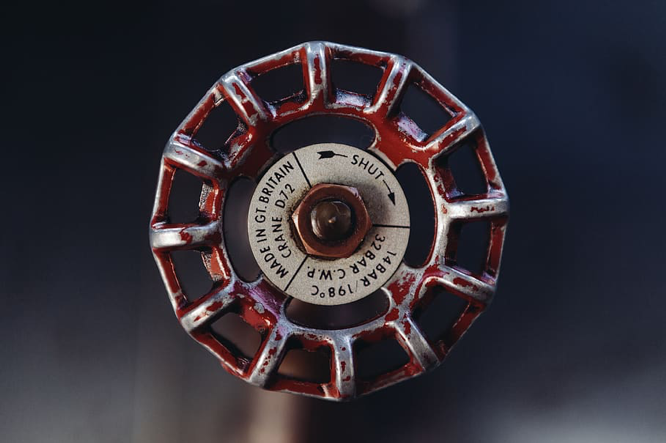 The section takes into account the occupancy classification and automatic sprinkler system requirements. Although the NFPA codes and requirements reference the proper design and installation, the NYC Building Code gives strict and clearly stated instructions regarding specific applications and occupant groups.
The section takes into account the occupancy classification and automatic sprinkler system requirements. Although the NFPA codes and requirements reference the proper design and installation, the NYC Building Code gives strict and clearly stated instructions regarding specific applications and occupant groups.
Aside from the fire sprinkler system application and set standards, another section deals with the use of fire-extinguishing system applications. The main discussion under this NYC Building Code section is whether water-based fire suppression is appropriate. It takes into account all the major systems such as halon, carbon dioxide, foam, dry-chemical, wet-chemical, and clean-agent systems. Furthermore, the instructions don’t end there.
It also emphasizes the proper maintenance of the automatic fire sprinkler systems. Importantly, the maintenance and operation instructions also apply to other fire-safety measures and methods. According to Chapter 9 of the Building Code for NYC commercial buildings, there is a set requirement for labeling out-of-service fire sprinkler systems and other fire safety measures.
Fire Sprinkler Requirements for Commercial Buildings: Conclusion
Is your commercial space located in New York? Well, in order to receive the best fire protection system design, you should contact a fire protection business that operates to the highest standards.
More importantly, you must seek the help and guidance of a fire sprinkler design company that offers maximum federal code compliance. Do you think that your building requires an update or a completely new fire sprinkler system? Call Fire & Drafting Designs Inc. at (718) 928-3009 for information.
We cater to a wide range of customers and business clients looking to adopt the latest fire protection measures and systems in their commercial buildings in New York.
F2M Fire & Drafting Designs Inc.
1231 Lafayette Ave, Fl 2
Bronx, New York, 10474
✆ (718) 928-3009
info@f2mfadds.com
Reference Links:
https://up.codes/viewer/new_york_city/nyc-building-code-2014/chapter/9/fire-protection-systems#9
https://www1.nyc.gov/site/buildings/industry/project-requirements-design-professional-sprinkler.page
https://www1.nyc.gov/site/fdny/about/resources/code-and-rules/nyc-fire-code.page
https://nycadmincode.readthedocs.io/t27/c01/sch17/art04/
The Need for Fire Protection Systems in Commercial Buildings
Let’s discuss why there is an important need for fire protection systems in commercial buildings. Fire is a common hazard that affects thousands of businesses every year. Fire incidents not only cause major structural damages and threats to human lives but also involve a disruption in the operational process. Moreover, when fire incidents take place in commercial buildings, they can cause injuries to the workers and damage expensive assets, etc. For that reason, the need for fire protection systems in commercial buildings is of paramount importance. In this article, we will discuss the importance and requirements of commercial fire protection systems.
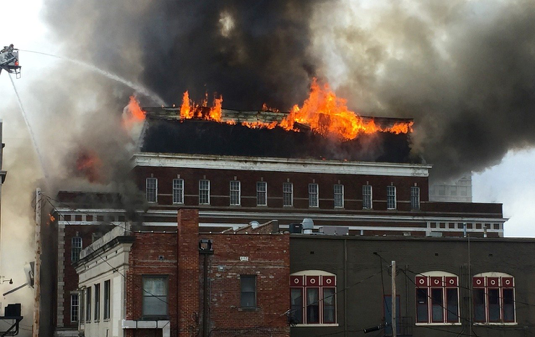
(Source)
Specific Requirements for Commercial Fire Protection Systems
There are multiple sets of codes, requirements, and standards for building, designing, and installing commercial-level sprinkler systems. The most common standards sets are from the National Fire Protection Association (NFPA). NFPA 13 states proper safety standard requirements by outlining the required conditions and procedures in the installations of commercial fire sprinkler systems installation.
In reality, commercial fire sprinkler system designers and managers of building projects need to pay attention to the local fire safety guidelines as well. Overall, it is imperative to meet all the local and federal guidelines in installing commercial fire sprinkler systems.
Here are some specific fire sprinkler system requirements for commercial buildings:
- Buildings with a height over 55 feet require an automatic fire sprinkler system installed throughout the structure
- Automatic fire sprinkler system installation should take place in all newly built commercial buildings with a fire area of over 5,000 square feet. Moreover, the automatic fire sprinkler system installation is compulsory when a remodeling, renovation, or any other form of expansion increases the fire area beyond 5,000 square feet or 12,000 square feet. The main thing to note should be that the coverage has to be maximum and throughout the commercial structure.
- You should have fire pumps installed in addition to the fire sprinkler system. This is important when the municipal water supply doesn’t carry the required pressure to deliver water effectively through the sprinklers. Moreover, in case the water supply involves the use of a non-pressurized water tank, fire pumps are mandatory. Besides that, the fire pumps have to be in a separate building from the fire sprinkler system. If they are in the same building, there has to be an exterior entrance to the fire pump room.
- Water control valves have to be of utmost convenience and usable when required. Their access is of paramount importance to prevent water damage and control the spread of rapidly growing fire. It should be easy to find and use the water supply control valves with clear identification throughout the commercial structure. Valves have to carry the information regarding the areas they cover.
- When it comes to self-storage facilities, there has to be an active and working fire sprinkler system in place at all times. This is not mandatory if the facility is one-story with no indoor doorways or corridors in addition to a one-hour fire barrier.
These are a few commercial fire protection and sprinkler standards and compliance materials, as the NFPA states. You should only learn a few basics of the commercial fire protection standards if you cannot grasp the technical concepts. By only learning why they are necessary, you may be able to procure the right fire protection services provider to help you keep your commercial space fire-safe.
Importance of Certain Fire Protection System Components
Fire Sprinkler/Standpipe Systems
Sprinkler systems turn on when they detect a certain level of heat or smoke. They are the prompt reaction against any spreading fire, which keeps the fire from spreading and getting massive enough to cost health injuries, structural damage, and more. Standpipe systems and sprinklers are most commonly present in various commercial buildings for the safety of the occupants and workers.
Moreover, it is imperative to carry out regular inspections and tests to ensure that every fire protection system component is up to par and efficient.
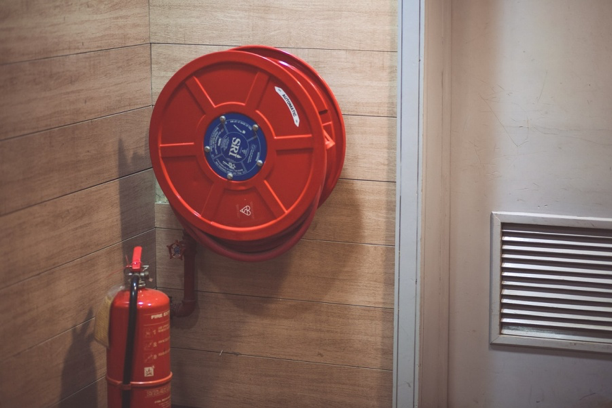
(Source)
Fire Extinguishers
Fire extinguishers are manual forms of fire protection that you can use in case of a fire accident. They are usually wall-mounted and present in nearly all buildings, whether commercial, industrial, or residential. All workers and occupants should possess the right set of knowledge regarding the use of fire extinguishers. Furthermore, it is necessary to maintain the condition, quality, and function of fire extinguishers for the safety of occupants of the commercial buildings.
Fire Alarms and Emergency Signs
Fire alarms should be the first line of defense against any fire-related issues. Without proper alert and notification, it is difficult to take accurate and timely actions. A fire alarm is a major component of a commercial building for fire protection. Moreover, there should be a clear exit and emergency signs to assist people through the smoke and flames during a fire accident in a commercial building.
Fire Protection Systems in Commercial Buildings: Conclusion
Suppose you want reliable and the best fire protection services for your commercial building. In that case, you should get in touch with F2M Fire & Drafting Designs Inc. We possess the knowledge of all the mandatory fire protection standards, regulations, requirements, and more. You can achieve peace of mind regarding the fire safety of your building with our help.
Visit our official website and learn more. Contact us and schedule a consultation with an expert from F2M Fire & Drafting Designs Inc. today.
F2M Fire & Drafting Designs Inc.
1231 Lafayette Ave, Fl 2
Bronx, New York, 10474
✆ (718) 928-3009
info@f2mfadds.com
Reference Links:
https://www.nfpa.org/codes-and-standards/all-codes-and-standards/list-of-codes-and-standards
https://www.qrfs.com/blog/313-icc-and-nfpa-codes-and-standards-a-basic-guide/
https://www.safetyfirst.co.nz/news/fire-protection-compliance
Commercial Fire Sprinkler System Design
What is the process of commercial fire sprinkler system design? There are many things that you will take into account when designing a commercial building fire safety system.
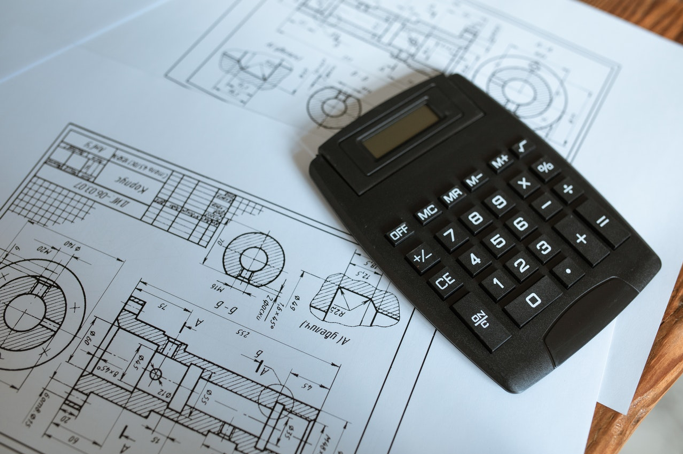
(Source)
One essential thing for adding fire protection to any commercial space, whether a retail shop, center, warehouse, office, educational institute, office or an entire building, are fire sprinkler systems. These are the most important equipment for fire safety guidelines that ensure protection in the case of a fire that’s starting to spread. The automatic water discharge from the sprinkler heads (automatic heads) can extinguish the fire before it actually spreads.
Designing a Commercial Fire Sprinkler System
Most of the fire protection plans incorporate a fire sprinkler system as it is a major commercial application to ensure fire resistance. Choosing the right fire sprinkler system is not an easy task. On top of that, if you lack the experience and don’t know about the fire safety standards of the industry, here’s some basic knowledge for you. Although it doesn’t cover overly complex and technical information, you’ll swiftly get an idea of what is necessary during a commercial fire sprinkler design process.
Fire can cause loss of human lives, permanent health injuries, resource loss, asset damage, building, and structural damage, along with many penalties based on poor fire protection measures. Therefore, fire protection remains a top priority of all commercial building owners for their safety.
For employees of a business, it can be difficult to work with peace of mind when there is a risk of fire hazards. Moreover, you can adopt a swift approach and hire the best professionals to design a fire sprinkler system for your commercial space to make them feel safe. Here’s what the design process takes into account.
Fire Systems & Code Compliance
Code compliance is a prerequisite that no professional fire sprinkler designer can ignore. The only thing that differentiates the most effective and functional fire sprinkler systems from the poorly maintained and running ones is code compliance. The NFPA, in addition to the local fire safety rules around your region, will provide the main criteria, instructions, standards, and codes for installing a new fire sprinkler system.
It is the objective of every trustworthy, efficient, and reliable fire sprinkler designer to make sure that their designs and installation suggestions comply with the NFPA and local authority-set rules and standards. By keeping the codes and standards of fire safety in mind, you will maintain a higher fire resistance for your commercial space. According to the codes, regular inspections after proper installations are essential.
Water Supply for the Commercial Fire Sprinkler System
The main concern regarding the application of a fire sprinkler system is water which is necessary to surpass the fire. The sprinkler heads discharge water through the nozzles upon detecting smoke or heat on a certain level. However, it is intermittent to leave the water supply out of the equation. If you plan to adopt a fire sprinkler system, you will have to make sure that you acquire the right water sources. Is it an underground tank that will require pressure pumps for additional water flow consistency? Do you plan to use the nearest municipal water supply? Well, in any case, the water supply will go through the water flow test to make sure that all necessary measures are in place to maintain the pressure during water discharge. In compliance with NFPA 13, a sprinkler system should comprise an automatic water supply.
Choosing the Type of Fire Sprinkler System
Following the adoption of water supply and proper measures, the next step is to determine what kind of fire sprinkler system does the commercial space need? Is the space in a cold area where a dry pipe sprinkler system may prevent water or gas freezing in the pipes? Or is it in an arid or hot urban area where a wet-pipe sprinkler system will ensure effective and quick fire suppression? Your fire sprinkler designer will be able to make the best choice according to your needs.
Determining the Hazard Level & Water Capacity Needed
The team of professional fire sprinkler designers determines how much water will be necessary to control the spread of a fire. This involves the use of conceptual tools, including density/area curves, occupancy hazard, and design area.
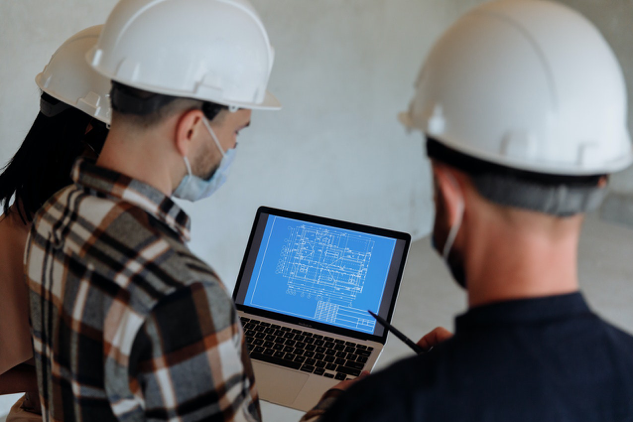
(Source)
Layout and Coverage of Fire Sprinkler Heads
Since the design process of sprinkler systems is iterative, there are other calculations involved than those above. The sprinkler coverage and flow rate play a critical role in fire suppression. How much time it takes for a specific amount of water to discharge out of the sprinkler heads will determine how quickly the system can suppress a fire. The professional designers will consider the overall spread of sprinklers over a certain area to ensure maximum efficiency.
Commercial Fire Sprinkler System Design : Conclusion
Fire & Drafting Designs Inc. employs the best resources at its disposal to make sure that every client and their space receive maximum fire safety. In fact, we have the best technicians, engineers, and other helpful workers to deliver the best fire-resistant system for a building or space.
Do you want to ensure that your fire sprinkler system complies with the industry standards and local laws & codes? Well, we aim to make sure that all the fire safety practices are in compliance with the NFPA standards and other necessary regulations.
Call us at (718) 928-3009 to meet with an expert from Fire & Drafting Designs Inc. You can visit our official website and go through the list of fire protection design & drafting services that we offer.
F2M Fire & Drafting Designs Inc.
1231 Lafayette Ave, Fl 2
Bronx, New York, 10474
Reference Links:
https://www.wbdg.org/design-objectives/secure-safe/fire-protection
https://www.qrfs.com/blog/374-the-elements-of-fire-sprinkler-system-design/
https://www.kmbdg.com/news/fire-protection-engineering-2/
https://www.buildings.com/articles/35584/fire-protection-system-design
Types of Fire Protection for Commercial Buildings
There are many types of different fire protection systems for commercial buildings. For starters, fire protection systems for commercial buildings differ from that of residential buildings. The primary reason for installing a fire protection system in a commercial building is to secure human lives and reduce the potential risks of damage to property in case of fire emergencies.
When commercial buildings have a reliable fire protection system, the owner and occupants/ workers feel confident and safe. This implies a responsible and secure workplace for conducting business and other commercial activities.
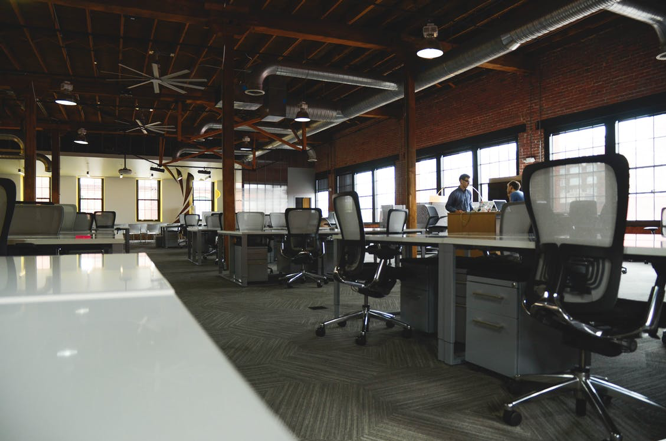
(Source)
But what are the “various” fire protection options for commercial buildings? Below, we will discuss some active and passive types of fire protection systems.
Different Types of Active-Fire Protection for Commercial Buildings
Fire Sprinkler Systems
Fire Sprinkler Systems consist of numerous sprinkler heads connecting to a series of pipes. The pipes in fire sprinkler systems have either electronic (automatic) or manual valve control. A pressurized water discharge through the sprinkler head(s) occurs after the activation of the fire alarm.
Every sprinkler head can discharge the water from the pipe simultaneously. A single sprinkler head may also act independently, regardless of all the sprinkler heads releasing water at once. Three different types of fire sprinkler pipe systems:
- Wet pipe; this fire sprinkler system is capable of holding water in the pipes at all times. This type of fire sprinkler system is highly suitable for warm places that are not under the influence of icy weather.
- Dry pipe; unlike a wet pipe system, this fire sprinkler system contains compression in the pipes at all times in the form of pressurized air or nitrogen. This is because, in cold and icy places, water freezes in the pipes, which causes a delay in extinguishing fires. Hence, normally when the fire alarm rings upon detecting a fire, pipes release the air, and the sprinkler heads discharge water.
- Deluge System; this fire sprinkler system is extensively adequate for places that comprise highly combustible and flammable materials. The spontaneous fire damage and the risk of losing human lives (workers or staff at the highly fire-hazardous places) are relatively low due to this fire sprinkler system. All of the sprinkler heads discharge water at once when the fire alarm rings. Hence, an instant fire safety measure.
These systems of fire protection are highly popular and are common in a large number of commercial buildings. However, there may be instances when water sprinkler systems might cause more damage than security. In some cases, they may cause significant water damage. Of course, with proper training and installation of manual alarms and switches, irreversible water damage is avoidable.
Foam Water Sprinkler System
Sometimes, a fire sprinkler system may contain water mixed with a concentrate of foam. This instantly douses fumes and smokes resulting from the combustion of materials such as flammable gases or alcohol. These materials combust after exposure to a few minor sparks. Nevertheless, foam water suppresses flammable solvents, reducing the chances of a re-flash.
Fire Extinguishers and Blankets
Extinguishers and fire blankets are an essential part of an active fire protection system in a commercial building. Moreover, certain offices and workplaces demand proper training and practice of their employees and staff against fire hazards.
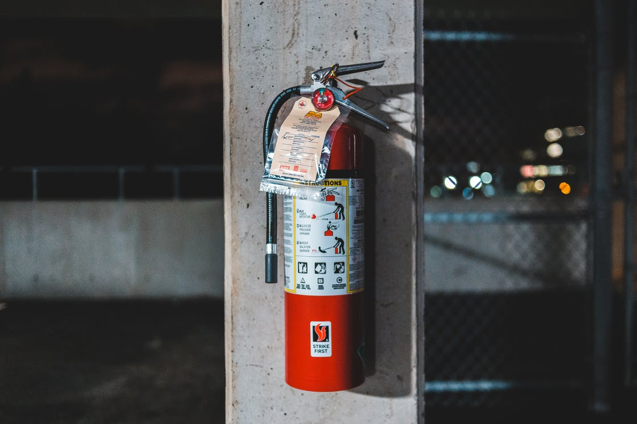
(Source)
The use of a fire extinguisher at the origin of the fire restricts the spread. Fire blankets cover the area of the fire, which restricts air and keeps it from blazing.
Passive Fire Protection Systems for Commercial Buildings
Fire Resistant Walls, Glass, Doors, Windows
Fire-resistant doors are aluminum coated. They have standard smoke-stopping hardware and can withstand heat for up to 60 minutes. Similarly, a few glass-windows or glass-doors are fire-resistant. They are able to withstand heat and fire emergency features for up to two hours.
Conclusion: Consult With A Professional Fire Protection Company
The task of creating, designing, and installing fire protection systems falls on the engineers and architects respectively in the industries. Moreover, their expertise and knowledge can also help you make excellent decisions for the fire safety of your commercial building.
At F2M Fire & Drafting Designs Inc., our team of trained professionals have extensive knowledge about fire protection systems. Our engineers and technicians will help you design a custom fire sprinkler system for your commercial building right here in New York City, the Tri State area, or in another state in the US.
For a free consultation, call us at (718) 928-3009 or email us at info@f2mfadds.com.
References
- https://united-fire.com/a-guide-to-the-different-types-of-commercial-fire-protection-systems-available-today/
- https://www.slideshare.net/snehacoutinho/fire-fighting-in-commercial-buildings-services
- https://www.netatmo.com/en-us/guides/security/fire/faq/fire-protection
- https://en.wikipedia.org/wiki/Active_fire_protection
